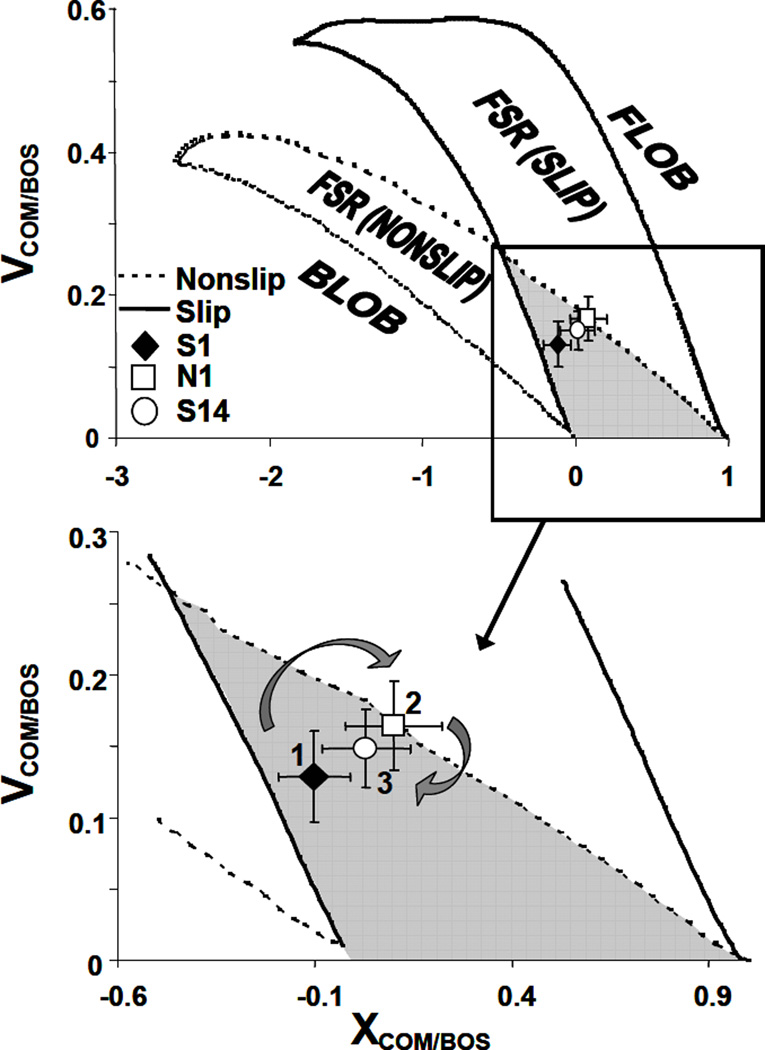Figure 5.
The group means (± SD) of COM motion state (position and velocity) at seat-off for the first sit-to-stand slip (S1, area 1), the first nonslip trial during the first nonslip block (N1, area 2), and the last sit-to-stand slip (S14, area 3). The predicted feasible stability region (FSR) for slipping is represented by the area enclosed by solid line, and nonslipping conditions are shown in the area enclosed by dash-line. The COM position (XCOM/BOS) was defined as the absolute COM position in the anteroposterior direction relative to the rear of BOS and normalized by foot length. The COM velocity (VCOM/BOS) was calculated from the differentiation of COM position and normalized by body height. The shaded area represented the common feasible stability region, where balance loss could be prevented for both slipping and nonslipping conditions. On the first sit-to-stand slip, subjects’ COM state at seat-off was around area 1, which was closer to the boundary of backward balance loss (BLOB) for slipping. Thus, all subjects experienced backward balance loss on the first unannounced slip. After repeated exposures to slipping, subjects’ COM state at seat-off shifted from area 1 to area 2, which was further inside the stability region for slipping but near the forward balance loss (FLOB) for nonslipping conditions. Therefore, nearly all subjects experienced a forward balance loss on the nonslip trial when the slips stopped. However, by the end of training, subjects readjusted their COM state from area 2 to area 3, which was in the middle of the shaded area, where balance could be maintained regardless of whether a slip occurred or not.

